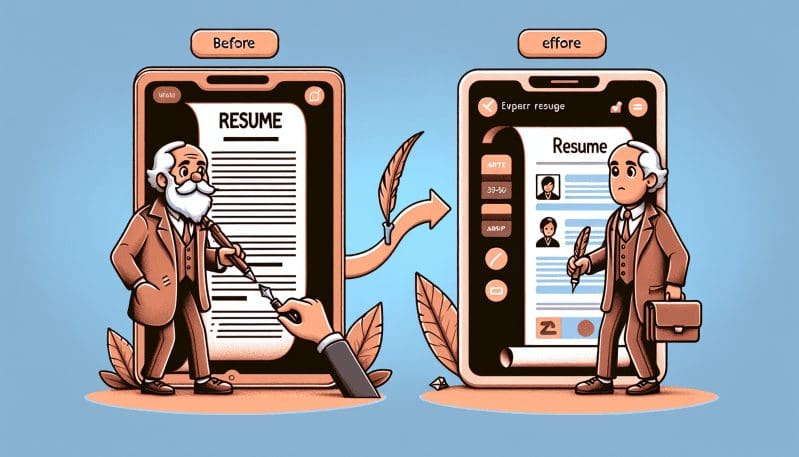The Evolution of Resumes in the Digital Age: Are Traditional CVs Becoming Obsolete?
- Home
- The Evolution of Resumes in the Digital Age: Are Traditional CVs Becoming Obsolete?
- Editors Desk
- March 28, 2024
- 0 Comments
In an era of constant digital transformation, the traditional two-page curriculum vitae—once the cornerstone of job applications—is facing an existential question: Has the digital age rendered it obsolete? As we navigate through the bustling crossroads of personal branding, digital portfolios, and omnipresent online profiles, the narrative of the job search is rapidly changing, compelling both job seekers and employers to adapt or risk being left behind.
The advent of LinkedIn, a platform synonymous with professional networking, has introduced a dynamic twist to the job hunt saga. Here, a living resume breathes through real-time endorsements, a network of professional connections, and interactive engagement with the industry’s latest developments. The sheer accessibility and scope of LinkedIn transcend the boundaries of traditional resumes, offering a multidimensional glimpse into a candidate’s professional journey.
Personal websites and digital portfolios, meanwhile, serve as individualized galleries of one’s work. Artists, writers, and consultants, for instance, can showcase their portfolios with interactive elements that allow for a richer representation of their skills and accomplishments. These digital arenas invite potential employers to experience the candidate’s work firsthand, thus breaking the confines of bulleted lists and static job descriptions.
As hiring managers wade through an ever-increasing deluge of applications, the appeal of multimedia formats as a means of candidate evaluation becomes clear. These tools can convey personality, creativity, and professionalism in ways that a paper CV cannot. Moreover, they offer a platform for candidates to demonstrate proficiencies in digital literacy, a skill increasingly sought after in the modern workplace.
However, while innovation in the realm of resumes is to be celebrated, we must also question whether it has fundamentally altered what employers are looking for. Do traditional resumes fall short in conveying a candidate’s potential, or do they still serve as an effective initial filter in the hiring process? It seems that the answer is industry-specific, with creative fields leading the charge in alternative resume formats while more traditional sectors remain attached to the conventional CV.
For candidates, staying visible and relevant requires a delicate balancing act. On one hand, there is a need to develop and maintain a robust online presence that reflects one’s skills and professional ethos. On the other, it is crucial not to neglect the art of crafting a concise and impactful traditional resume, as not all industries have embraced digital alternatives.
Looking ahead, the future of resumes may well include a blend of traditional and digital elements, allowing for both quick assessment and in-depth exploration of a candidate’s qualifications. As such, both workers and workplaces must become adept at navigating this blended landscape. For job seekers, this means cultivating a versatile toolkit of self-presentation strategies. For employers, it demands an open-minded approach to talent acquisition that recognizes the evolving ways in which professional competence can be displayed.
In conclusion, while traditional CVs may not be entirely obsolete, their role in the job search process is undeniably changing. To remain competitive and relevant, both job seekers and employers need to embrace the multifaceted nature of presenting and evaluating professional qualifications in the digital age. Understanding this evolution is critical not only for individual success but also for shaping a workforce capable of meeting the challenges of an ever-changing economic landscape.


Leave A Comment